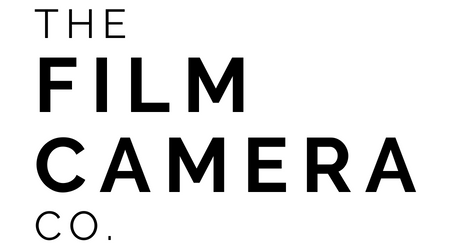Choosing the right 35mm film for your photography adventures can be a bit overwhelming. With so many options out there, it's important to know the differences and find the perfect film for your needs. In this guide, we'll break down the basics, so you know what to look for when you’re buying your film, and we’ll also share some of our top picks for various situations.
What types of 35mm film are there?
There are two main types of 35mm film that can be used in point and shoot film cameras: black and white film and colour negative film. Below we have outlined all major types of 35mm film, but it's important to note that not all point and shoot cameras are compatible with all types of film. Be sure to research your camera to ensure that the film you choose is compatible with your camera.
Each has its unique characteristics, and the choice depends on your subject matter and personal preferences.
Colour Negative Film
The go-to choice for many point-and-shoot cameras, colour negative film creates negatives that can be transformed into colourful prints. Colour negative film captures vibrant and lifelike colours with a wide dynamic range. It's versatile and suitable for various subjects, from landscapes to portraits.
Black and White Film
Perfect for artistic and documentary photography, this film creates black and white negatives that can be printed into monochrome images. It's perfect for capturing emotions, textures, and contrasts in your photography.
Colour Slide Film
Also known as reversal film, this type is all about producing transparencies that can be projected or directly viewed. It's a favourite for landscape and travel photography, thanks to its high contrast and saturation.
ISO 400 Film
Need to capture low-light scenes or fast-moving subjects? This high-speed film has you covered. It might produce grainy images, but its ability to capture action makes it a popular choice.
ISO 100 Film
When quality is key, ISO 100 film delivers. This low-speed film provides fine-grained, top-notch images, making it ideal for outdoor and landscape photography under good lighting conditions.
Specialty Films
For those looking to experiment with their photography, a variety of specialty films, such as infrared and cross-processed film, can be used to create unique and artistic results.

Things to consider when choosing which 35mm film to use
Film Speed
Film speed (ISO) determines the film's sensitivity to light. Lower ISO films (100, 200) are best for bright conditions, while higher ISO films (400, 800) work well in low light.
Aesthetic
Different films have unique colour renditions, contrast levels, and grain structures. Choose a film that aligns with the look you want to achieve.
Exposure Count
Consider the number of exposures per roll. A 36-exposure roll provides more shots, while a 24-exposure roll might be better for experimenting.
What Subject Are You Shooting?
Portraits
For portraits, look for films with fine grain and natural skin tones, like Kodak Portra 160 or 400.
Landscapes
For landscapes, opt for films with vivid colours and high sharpness, like Fujifilm Velvia 50 or Kodak Ektar 100.
Street Photography
For street photography, choose films with good contrast and versatile ISOs, like Kodak TRI-X 400 or Lomography Lady Grey.
Recommended Films
We’ve tried and tested a tonne of 35mm over the years. Here are our top picks!
Kodak Portra 400
Our firm favourite, this film develops like a dream. One of the standout features of Kodak Portra 400 is its ability to produce true-to-life, vibrant colours while maintaining natural skin tones, and detail with a fine grain.
This film excels in various lighting conditions and is perfect for almost any setting, from portraits to landscapes. Overall, it’s a reliable, high-quality, versatile film that we use a lot.

Kodak Gold 200
Kodak Gold 200 is a popular 35mm colour negative film. It’s affordable, and produces photos with a nostalgic aesthetic. It's a great choice if you’re looking for a vintage look in your images, as it delivers warm, slightly saturated colours and a classic film grain.
This film performs best in daytime settings, sometimes struggling in low light or high-contrast situations.

Kodak Ektar 100
Fujifilm Superia X-TRA 800 made it into our top picks because of its performance in low light conditions. This is a colour negative film that performs well in various lighting conditions, but especially low light scenarios. With an ISO of 800, photos have a fine grain and vivid colours.
If you want to be able to capture memorable moments in dimly lit settings, this is the film for you.

FAQs
Can I use any brand of 35mm film?
Absolutely! Feel free to try any brand of 35mm film with your camera. Just remember that each brand has its unique qualities, so play around with different options to find the one that suits your style.
Does all 35mm film work in all cameras?
For the most part, any 35mm film will be compatible with any 35mm camera. That being said, some cameras might need specific film types or have limitations based on ISO or other factors. To be on the safe side, take a look at your camera's manual for any compatibility details. All camera manuals can be found online, so don’t panic if you don’t have the original!

